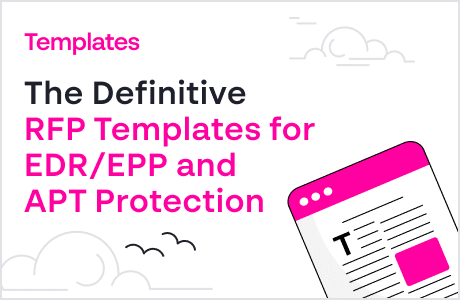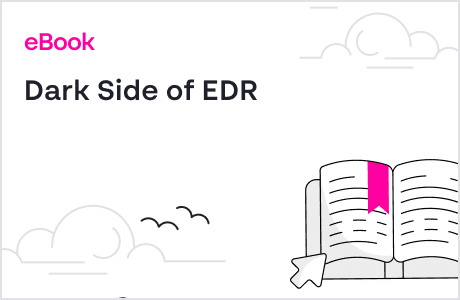XDR Security Solutions: Get to Know the Top 5
XDR enables organizations to extend endpoint visibility beyond regular endpoint detection and response (EDR). XDR security solutions can integrate with existing SOAR and SIEM, as well as cloud and on-premise environments, and remote endpoints such as IoT.
XDR is very new, but several major security vendors have launched an XDR solution. In this article you’ll get a brief review of the leading XDR solutions by Cynet, Palo Alto, Cisco, Microsoft, McAfee, and more.
What is Extended Detection and Response (XDR)?
Extended Detection and Response (XDR) is a cybersecurity solution that unifies threat detection and response across endpoints, networks, email, cloud, and more. Unlike siloed tools, XDR collects and correlates data from multiple sources into a single platform. This integration provides better visibility, faster threat detection, and more efficient response to multi-vector attacks. XDR often includes automation and AI to reduce manual work and improve accuracy.
Why Organizations Need XDR Security Solutions
Endpoints have always been a target for attackers and a primary security concern. But as systems become more complex and distributed, this attack surface has increased and security teams are implementing advanced security solutions to ensure organizational resources remain secure.
These security solutions must span components throughout your system, including cloud resources, email servers, on-premises resources, and remote or Internet of Things (IoT) devices. Solutions also need to provide centralized visibility with comprehensive system information. XDR systems are designed to fill this need.
XDR solutions offer detection and response capabilities that extend beyond what is possible with endpoint detection and response (EDR) or point solutions. They add on network, cloud, and email security, among others. In addition, XDR enhances the capabilities of existing monitoring systems and enable event tracing beyond endpoints.
Top 5 XDR Security Solutions
Before investing in an XDR solution, you should take the time to evaluate multiple solutions. You need to ensure that solutions are compatible with your existing tooling and that capabilities are appropriate for your specific resources. Below are the top 5 solutions you should consider.
Cynet XDR, Response Automation, and MDR
Solution scope:
Cynet all-in-one is an autonomous breach protection platform, combining XDR prevention and detection capabilities, with alerts for third-party systems, SOAR-like capabilities for fully automated event investigation and remediation, and a 24/7 MDR service without additional cost.
Delivery model:
On prem, cloud or hybrid
Product page:
<a href="https://www.cynet.com/platform/xdr-clm/ ">https://www.cynet.com/platform/xdr-clm/ </a>
Capabilities of Cynet All-in-One include:
- Ability to deploy across thousands of endpoints in minutes
- Multi-layered endpoint protection against exploits, fileless attacks, malware, and ransomware
- Network protection against data exfiltration, lateral movement, man in the middle (MitM) attacks, and scanning attacks by ingesting data from firewalls, routers, and switches
- Incident Engine automatically determines an attack root cause and impact, and takes appropriate remediation actions
- Dynamically defined behavioral rules for detection of unknown threats
- Deception techniques, including file, user, and network decoys to divert and trap attackers
-
- Data correlation from multiple sources
- Monitoring of user activities, file access events, and configuration changes within cloud environments.
- IAM systems monitoring for suspicious user authentication events, group membership changes, and administrative actions.
Pros:
- Full endpoint, network, mobile, IoT, and cloud protection
- Easy to use
- Robust detection, protection validated by MITRE
Cons:
- Focuses on SMEs and MSPs, and not enterprises
Palo Alto XDR
Palo Alto’s Cortex XDR platform is built for Fortune 500 companies with large 24X7 SOC teams. It can be used to monitor and manage endpoint, cloud resource and network data and events. It incorporates features for incident prevention, detection, investigation, and remediation.
Top capabilities:
- AI-Based Detection – Data analysis from endpoints, network traffic, identities, and cloud environments to detect threats.
- Behavior and RCA – Monitors user and system behavior to detect anomalies. When a threat is found, it reconstructs the attack path and affected assets.
- Incident Response – Supports evidence review, threat hunting, and investigations using forensic data.
- Automated Response – Integrates with XSOAR for automated actions like isolating devices, killing processes, and blocking traffic. Includes Live Terminal for direct response.
- Product Integration – Natively integrates with Prisma Cloud, NGFW, and XSOAR for unified visibility and policy control.
- Threat Intelligence – Cross-customer analytics help detect complex threats. Incidents are prioritized using risk scores.
- USB Control – Agentless control over USB usage. Allows restrictions by endpoint, device type, vendor, or AD identity, including read/write permissions.
- Firewall & Encryption – Manages inbound/outbound traffic and integrates with BitLocker/FileVault for disk encryption. Controlled via the management console.
- Mobile Security – iOS: URL filtering, spam control, traffic monitoring. Android: APK inspection to block malicious apps.
Pros:
- Comprehensive protection
- Robust solution
- Reputable company
Cons:
- Requires integrating into the Palo Alto ecosystem
- Complex learning curve
- Built from enterprises and complex environments
Pricing:
Pricing is not publicly available and can be received upon contacting the vendor’s partners.
Official product page:
https://www.paloaltonetworks.com/cortex/cortex-xdr
Cisco SecureX XDR
Cisco’s XDR solution, Cisco SecureX, is a cloud-native platform you can use to create an integrated security portfolio based on your own and Cisco’s policies. It includes automated workflows for threat detection and response, features for security analytics, and more than 170 out-of-the-box integrations.
Capabilities of Cisco SecureX include:
- Data collection and correlation across network, cloud, endpoint, email, identity, and applications
- AI prioritization and remediation guidance for incidents
- Full incident response, including preparation, detection, analysis, containment, eradication, and recovery.
- User and device inventory for investigations and tracking user behaviors and devices
- MITRE ATT&CK coverage mapping
- Third-party integrations (partial)
- Enriched network telemetry from Meraki MX devices, including traffic patterns, device behavior, and system changes
Pros:
- Comprehensive solution
- AI automation
Cons:
- No wide community use
- Marketing lingo misaligned with product capabilities
Pricing:
Pricing is not publicly available and can be received upon contacting the vendor’s partners.
Microsoft Defender XDR
Microsoft Defender XDR is a system you can use to prevent threats, detect breaches, and respond to automated event investigation. It supports endpoints, vulnerability management, email security, identity protection, and SaaS protection.
Capabilities of Defender XDR include:
- Visibility into all detections, impacted assets, automated actions taken, and related evidence in a single queue and a single pane in the Microsoft Defender portal.
- Grouping of remediation action
- Automated responses through AI and playbooks
- Self-healing for compromised devices, user identities, and mailboxes
- Custom queries over the raw data
Official product page:
https://learn.microsoft.com/en-us/defender-xdr/microsoft-365-defender
Pros:
- Strong security capabilities
- Included in other security licenses
Cons:
- Poor UX
- Poor integrations with other tools, including the Microsoft ecosystem
- Difficult setup
Pricing:
A license to a Microsoft 365 security product entitles the use of Microsoft Defender XDR without additional licensing cost.
Sophos XDR
Sophos XDR is a cloud-native platform that helps detect, investigate, and respond to threats across endpoints, mobile, cloud, workloads, emails, and network. It includes firewalls, ZTNA, managed services, and AI.
Capabilities of Sophos XDR include:
- AI-generated threat scores and prioritized detections
- Case management, collaboration, and response actions
- Threat hunting and investigation
- GenAI for search and investigation
- Data retention
- Integrations with Microsoft, Google Workspace, and other security solutions
Official product page:
https://www.sophos.com/en-us/products/extended-detection-and-response
Pros:
- Fit for legacy systems
- Comprehensive training
Cons:
- Usability and UX
- Difficult setup
Pricing:
Pricing is not publicly available and can be received upon contacting the vendor.
What Should You Look for When Choosing an XDR Provider?
When choosing an XDR provider, focus on how well it aligns with your security operations, existing infrastructure, and future needs. Here are the key criteria to consider:
- Source Coverage – Look for a solution that collects and correlates data across endpoints, networks, cloud workloads, identities, and email systems. The broader the coverage, the better the context, visibility, and detection accuracy.
- Detection and Correlation Capabilities – Choose a platform that uses behavioral analytics, threat intelligence, and AI/ML to detect advanced threats across layers and telemetry sources. Strong correlation helps build complete attack visibility, even for complex attacks. This is key for isolation and mitigation.
- Automation and Response – Opt for a solution that provides automated playbooks, customizable rules, and orchestration. It should support real-time actions like isolating devices, killing processes, or blocking malicious IPs. This will speed up containment and remediation.
- Ease of Integration – Your XDR should integrate smoothly with your current stack, like SIEM, SOAR, EDR, firewalls, and cloud platforms, through native integrations and APIs. This ensures consistency and streamlined security workflows across the entire organization.
- Usability – Look for an intuitive UI, investigation tools, guided workflows, and contextual alerts that reduce alert fatigue. This will help security and IT become more effective, allowing them to focus on prevention and incident response rather than tool maintenance.
- Performance and Scalability – Evaluate how well the solution scales with your environment. It should maintain performance under high data volumes and support multi-tenant or distributed environments if needed. This will ensure it is protecting you at all times.
- Vendor Reputation and Support – Choose vendors with proven detection efficacy (e.g., MITRE ATT&CK evaluations), strong customer support, regular updates, and a clear product roadmap. This ensures the solution is robust and future-proof.
- POC Support – Ensure the vendor lets you run a POC with real data and team workflows to see how well the platform handles your alert load, investigation process, and reporting needs. This ensures it is a good fit before you commit.
Beyond XDR Security With Cynet’s Autonomous Breach Protection
Cynet 360 is an autonomous breach protection platform that works in three levels, providing XDR, Response Automation, and 24/7 MDR in one unified solution. Cynet natively integrates these three services into an end-to-end, fully automated breach protection.
Cynet’s XDR layer includes the following capabilities:
- Endpoint protection—multilayered protection against malware, ransomware, exploits and fileless attacks.
- Network protection—protecting against scanning attacks, MITM, lateral movement and data exfiltration.
- User protection—preset behavior rules coupled with dynamic behavior profiling to detect malicious anomalies.
- Deception—a wide array of network, user, and file decoys to lure advanced attackers into revealing their hidden presence.
Get a free trial of Cynet 360 and experience the world’s only integrated XDR, SOAR and MDR solution.
FAQs
Cybersecurity platforms that unify and automate threat detection, investigation, and response across multiple security layers: endpoint, network, cloud, email, and identity. Unlike siloed tools, XDR brings telemetry from various sources into a single console, applying analytics and automation to identify threats more effectively. This broader context enables faster threat detection and remediation, helping security teams spot advanced, multi-vector attacks that point solutions may miss.
XDR enhances threat visibility and streamlines incident response by correlating signals across systems and automatically prioritizing critical alerts. Businesses benefit from reduced MTTR, stronger threat detection accuracy, and less manual investigation. It also improves analyst productivity and helps organizations make better use of limited security talent.
XDR platforms offer small teams the ability to detect and respond to sophisticated threats like ransomware or phishing without building a full SOC.
XDR systems typically come in three deployment models: on-premises, cloud-native, and hybrid. Cloud-native XDR is the most popular due to ease of deployment, scalability, and reduced maintenance. Hybrid options support organizations with both cloud and on-prem infrastructure, while on-prem XDR may appeal to highly regulated industries requiring strict data residency or control.
EDR focuses solely on detecting and responding to threats on endpoint devices. XDR goes further, aggregating and correlating data from multiple domains such as endpoints, email, servers, cloud apps, and networks. This broader coverage allows XDR to detect attack patterns that span multiple vectors, improving detection fidelity and context.
Rather than flooding analysts with raw alerts, XDR platforms group related events into a single incident, provide context, and recommend response steps. This reduces noise and enables faster triage, allowing security teams to focus on what really matters.
A top-tier XDR vendor offers threat hunting, AI-driven prioritization, and unified visibility without requiring heavy tuning. Bonus points go to vendors with managed XDR services, open ecosystems, and demonstrated success in real-world threat detection.
Related Posts
Looking for a powerful, cost effective XDR solution?
- Full-Featured XDR, EDR, and NGAV
- Anti-Ransomware & Threat Hunting
- 24×7 Managed Detection and Response




